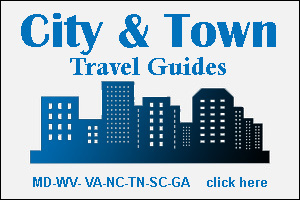Roanoke Virginia
“Star City of the South”
- Roanoke VA Arts and Crafts
- Roanoke VA Attractions
- Roanoke VA Bed and Breakfasts
- Roanoke VA Breweries
- Roanoke VA Cabin Rentals
- Roanoke VA Campgrounds
- Roanoke VA Hotel, Motel, Inn
- Roanoke VA Festivals
- Roanoke VA Outdoor
- Roanoke VA Performing Arts
- Roanoke VA Restaurants
- Roanoke VA Real Estate
- Roanoke VA Shopping
- Roanoke VA Travel Tours
- Roanoke VA Weddings
- Roanoke VA Wineries
Town of Roanoke VA
The city of Roanoke is located and nestled in the Roanoke Valley in the Virginia Blue Ridge Mountains and is an independent city. Roanoke is accessible and thew 2nd largest city within minutes of the Blue Ridge Parkway at milepost 120. Roanoke allows you to experience all four seasons with many exciting things to see and do anytime of the year. Roanoke is widely known for its railroad heritage, many annual festivals, outdoor adventure, historic markets and shopping, a variety of different style restaurants and many attractions.
While visiting Roanoke take some time to see some of the following attractions. The Virginia Museum of Transportation has the largest collection of diesel and steam locomotives in the United States. The Historic Roanoke Downtown city market was created in 1852 and today includes shopping, produce, art galleries, country stores, restaurants, and the Center in the Square. The Center in the Square is home to the Science Museum of Western Virginia, The Mill Mountain Theater, The Pinball Museum, The Kid’s Square Children’s Museum, The Roanoke Starcade, The Harrison Museum of African American Culture, The largest living reef aquarium in the Mid Atlantic States, and a rooftop garden initiative with great view of the Roanoke Valley. The Taubman Museum of Art features American, modern, contemporary art design and decorative art, folk, and visionary artwork.
Other attractions to see while you are here in Roanoke is the City Star, The Mill Mountain Zoo, Smith Mountain Lake, and the Dixie Caverns.
The area of Roanoke has plenty of outdoor recreation such as hiking, fishing, golfing, camping, and the Appalachian Trail just to name a few.
There are plenty of accommodations in Roanoke from hotels, to bed and breakfasts, campgrounds, resorts and many cabin and vacation rentals to enjoy your adventure and time spent here. People that stay in Roanoke travel to nearby attractions such as Dixie Caverns, The Salem Museum, The Natural Bridge, The Peaks of Otter, the Blue Ridge Parkway, and the towns of Vinton, Salem, Fincastle and Lexington Virginia.
Roanoke has also been called the festival city with the Festival in the Park, Roanoke Outside Festival, Henry Street Festival, Virginia Chili Cook off, and the Strawberry Festival.
If you are visiting Roanoke you need to take some time to visit the Roanoke Star. This 100 foot illuminated structure on top of Mill Mountain is a symbol of friendliness and civic progress in Roanoke seen for 60 miles. Its a great spot for photos whether day or night and perfect place to see the City of Roanoke at nights from an elevated view.
History of Roanoke VA
Over 300 years ago European settlers discovered Roanoke and its natural resources of limestone and salt deposits and was known as the, “Big Lick”. Then the herds of bison, elk and deer came to the area followed by the Totera tribes of Native Americans for hunting. In 1740 Mark Evans and Tasker Tush claimed the land which was to be known today as Roanoke. The salt licks in the middle of the valley led to the first village in 1834 called Gainesborough and soon the village became known as “Big Lick”.
The railroad came to Roanoke Valley but did not run close to Big Lick. Big Lick was chartered in 1874. Seven years later with the coming of the Shenandoah Valley Railroad, Big Lick was changed to Roanoke after the river and the county name.
The name Roanoke was derived from an Indian word, “Rowrenock” which is an Indian word used for Shell beads worn by the Indians for trade.
In 1882, Roanoke became the crossroads for the railroad and started the mark of the town’s rapid expansion; leading to the chartered city of Roanoke in 1884.
Today Roanoke thrives with commerce and tourism and is the center for transportation, distribution, trade, manufacturing, healthcare, entertainment, outdoor recreation, attractions and conventions.

